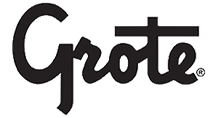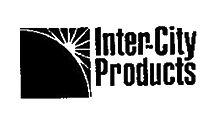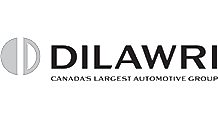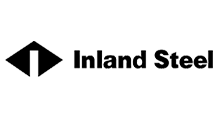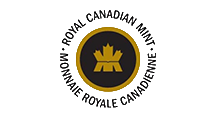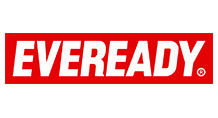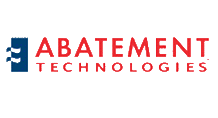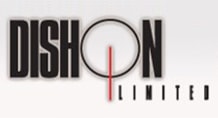What is Lean Belt Training?
The Lean Belt Certification Program trains employees on numerous elements of lean, to help them move away from traditional processes to the more effective lean methodology. The idea was taken from martial arts, where this system is very well known. In 1999, a gentleman named Michael Harry, who was part of the development of Six Sigma at Motorola, opened his own business and decided to use a belt system. He had a white belt, yellow belt, green belt, black belt and master black belt. These represented different levels that a student would go through in a company to gain higher levels of learning and capability. Each belt takes you up a notch in terms of your understanding of whatever the subject is. You get a certification every time you move up the ladder.
Some training companies such as ours, use this system of certification. So, the belt is really a level. I believe strongly everybody in a company should be at least at the green belt level. Then, they’re educated, and they’re ready to go on projects and participate in a meaningful way to implement lean. Black belts are usually a small number of employees, but they’re responsible for selecting projects, understanding them, monitoring teams, and leading them. A master black belt is like a mini-trainer from the outside. When we go in, our goal is to transfer our knowledge to a master black belt, who takes over when we leave.
- Learn more about Lean Belt Certification
- Holistic Lean Training
- Custom Lean Training
- Online Lean Training
What types of Lean Training are there?
The Lean Belt Certification Program trains employees on numerous elements of lean, to help them move away from traditional processes to the more effective lean methodology. The idea was taken from martial arts, where this system is very well known. In 1999, a gentleman named Michael Harry, who was part of the development of Six Sigma at Motorola, opened his own business and decided to use a belt system. He had a white belt, yellow belt, green belt, black belt and master black belt. These represented different levels that a student would go through in a company to gain higher levels of learning and capability. Each belt takes you up a notch in terms of your understanding of whatever the subject is. You get a certification every time you move up the ladder.
Some training companies such as ours, use this system of certification. So, the belt is really a level. I believe strongly everybody in a company should be at least at the green belt level. Then, they’re educated, and they’re ready to go on projects and participate in a meaningful way to implement lean. Black belts are usually a small number of employees, but they’re responsible for selecting projects, understanding them, monitoring teams, and leading them. A master black belt is like a mini-trainer from the outside. When we go in, our goal is to transfer our knowledge to a master black belt, who takes over when we leave.
What is the Lean White Belt?
The White Belt is the first step in the Lean Belt Certification Program. Provides all employees with an initial introduction and illustrates in detail the benefits of Lean. This training is usually provided in a package with the Yellow and Green Belt Training. Ultimately, we can customize the training to suit each of our client’s needs.
What is the Lean Yellow Belt?
Provides all white belt employees with an overview of management planning system. This is the second step in the Lean Belt Certification Program. This training is usually provided in a package with the White and Green Belt Training. Ultimately, we can customize the training to suit each of our client’s needs.
What is the Lean Green Belt?
Provides all yellow belt employees with a complete understanding of the theory and effective application of Lean concepts, principles and tools with a focus on waste. Once an employee graduates from this third level, they are equipped to help their organization to start or continue the journey of implementing the Lean Methodology.
What is the Lean Black Belt?
Provides qualified green belt employees with the expertise required to transform organizations to “Best-of-Class”. Provides all employees with the complete understanding of implementing Lean within an organization, through people, processes, and quality. They also learn the role that the Lean Framework Model plays in achieving major improvements in: on-time deliveries, meeting the customer’s expectations, reductions in processing time, and cost reductions by the elimination of waste.
What is the Lean Master Black Belt?
Provides qualified black belt employees with the expertise to train white, yellow, green and black belts. These employees are equipped to transform organizations to “Best-of-Class” status through the understanding of what is Lean Leadership and how every employee at every level must understand how to perform their Lean role to drive organizational success.
What is lean?
There is not one agreed upon definition of lean. In the eyes of different education and consulting groups, it can be different things. A problem is the lack of a Lean Standard, as there is with quality (ISO Standard). It’s made up of many subsections, like the Total Productive Maintenance, Quick Change, Containerization, Pull System, Error Proofing, 5S, many more elements. It can be quite overwhelming to an organization that’s first looking at it and trying to figure out how to implement it in their company.
What it boils down to is the process. It’s about taking your traditional operation and trying to streamline the environment: that’s the factory floor and the office, the whole company.
What is the main approach?
Because there is no Lean Standard in the world, it’s up to each company that’s training and educating people on lean to interpret the Toyota Production System on their own. Hence, some of them get it right and some of them don’t. There are many approaches, but it encompasses the journey from traditional methodology to lean production, while looking at the entire enterprise holistically. We did this when we started in 1986, while most have only started looking beyond the factory in the last ten years, since around 2007. Most consulting groups, when they come in to try and help a firm with improvements, they look at the organization how it’s structured (Vertically) not how the processes run from end to end (Horizontally). We started doing this since the 80’s and its just one of the elements that we consider.
What are some lean tools and techniques?
Well, it boils down to probably 4 or 5 different elements. One is trying to determine what value is in your process. The activities of workers as they are operating in the office or in the factory can be either categorized as: essential activities, or non-essential that shouldn’t be there. Today, they call this value-added and non-value-added. The value is one thing that they must look at very hard. Another element is value streaming. What do you need to do? There are some core value streams in your business, what we call the Make Ship loop, and there’s the supply chain loop in the business. Understanding what the high-level value streams are and then breaking the company down into core value streams and sub-value streams helps you start to understand the flow. You can then identify whether it’s good, bad, or where the bottlenecks are, and the whole issue of scheduling. We talk about pull scheduling when we’re talking about lean. Traditional manufacturers tend to push goods through the organization, and we help companies change to pull things through the factory, as opposed to pushing them. So, that’s another important element.
What are common issues when implementing lean?
There can be a number of issues. Starting at the top, senior management needs to do much more that to simply support the program. In our experience, it’s way more than that. To do a successful implementation and transfer of operating methods, we need a senior management that can teach lean. They need to be engaged, and the way they lead is by using some of the new tools that are out there that Toyota uses, like Hoshin Planning. By doing that, and doing it properly, the senior management now has a role to drive what needs to be changed in the business and to pass that down level by level. They must communicate very well with the entire workforce.
The people in each company is your biggest variability and can cause different concerns. Obviously, you want people to participate, but if you don’t have leadership at the top, the people will do whatever they want. I think inherently people want to improve their business, but they’re nervous. If you have a management team and go in a company that has not worked in teams, people are generally going to be afraid to participate in anything new, and think “Well, this is another case where the President got off an airplane, read a book and it’s the project of the month”. You’ve got to get past all of that, and the best way you can is with a good level of education. Personally, I don’t understand how a president of a company can tell the workforce we want to do lean and not give them the tools or the knowledge necessary. Remember, they might have been working there 20 years using the traditional methodology and they don’t know the difference between a streamlined process and what they’re currently doing. So, you may end up digging the same hole deeper and expecting better results without the proper training.
Communication can also be a problem if everything is not set up properly. Lack of project management, not providing the necessary resources, there are many things that can get in the way.
- View a list of our clients
- Learn the steps we take to combat these issues directly from our team of educators
How is CTM an industry leader in lean training?
We’ve helped companies, many of them, implement lean operating practices over the last 35 years, so we have a very good position and understanding of what it takes to implement the lean techniques and change from traditional processes. We have also developed a through set of criteria to help standardize lean training to ensure that it is done properly.
What experience does CTM have with lean?
One thing you can be sure of. The CTM Program Directors “have been there and they have done it before”. These professionals are true practitioners. They spend the vast majority of their time, and their careers, in the field and on the job, learning and perfecting their craft. For them, it is an ongoing task, and no matter what they develop for the classroom and books, they know it only works when it is put into practice.
How does lean increase profits?
Cycle Time Management has helped companies increase pretax profits up to 27 fold. In the last three decades it has become clear that the elimination of waste, or non-value-added activity, has freed business to increase profit margins drastically. In the case of Mott Manufacturing, once the CTM evolution plan was successfully implemented, the firm experienced extraordinary increases in sales, which in turn generated greater profits.
How does lean increase efficiency?
Treating people as a value adding asset in the process of business improvement is an essential CTM ingredient for success. It allows the people in the organization to take responsibility for the business process, which generates a continuous improvement mentality and empowers the whole organization to assist in the decision making for future success!
How does lean maximize productivity?
- When Cycle Time Management’s Program Directors come to your company to custom-tailor your Learning Cycles Supervisor program, they will quickly zero in on the key issues. They will determine where you are at, what the barriers are, and then develop the appropriate workshop lessons and approach.
How does lean cut costs?
A key focus of Lean is on eliminating waste. We’re talking waste of overproduction, transportation, when a piece of equipment is sitting idle, people are sitting idle, motion (taking ten steps when you only need to take one if your operation were laid out differently), over-processing, inventory, and defects. All of those are various types of waste that are found in what we’ll call traditional organizations as opposed to somebody attempting to implement lean.
I still go into factories today that have a 20-ton press which takes 8 hours to do a changeover of a die on. A company that has implemented lean however, can do it in 10 minutes on an identical machine. So, there is quite a difference once you allow yourself the flexibility to shorten your runs and move more effectively.
What is the Lean Belt System?
The idea was taken from martial arts, where this system is very well known. In 1999, a gentleman named Michael Harry, who was part of the development of Six Sigma at Motorola, opened his own business and decided to use a belt system. He had a white belt, yellow belt, green belt, black belt and master black belt. These represented different levels that a student would go through in a company to gain higher levels of learning and capability. Each belt takes you up a notch in terms of your understanding of whatever the subject is. You get a certification every time you move up the ladder.
Some training companies such as ours, use this system of certification. So, the belt is really a level. I believe strongly everybody in a company should be at least at the green belt level. Then, they’re educated, and they’re ready to go on projects and participate in a meaningful way to implement lean. Black belts are usually a small number of employees, but they’re responsible for selecting projects, understanding them, monitoring teams, and leading them. A master black belt is like a mini-trainer from the outside. When we go in, our goal is to transfer our knowledge to a master black belt, who takes over when we leave.
- Learn more about Lean Belt Certification
- Holistic Lean Training
- Custom Lean Training
- Online Lean Training
What industries can lean be applied to?
That’s a good question. In the beginning, when I started the company, it was hard enough to get manufacturers interested because there was the “It won’t work here in America, or in Canada” idea. We’ve learned over the years that the principles of lean, being process oriented, work in any industry, any office, any type of business. We’ve worked in with success in healthcare. We have implemented lean in wineries, improving efficiency throughout the organization. We’ve also worked with great results in the food industry, insurance companies, and many other industries. In Canada, most companies are not as far ahead as in the States, but we’re on the verge of the insurance companies opening up in a big way to the whole lean experience.
- Manufacturing
- Management
- Business
- Health Industry
- Legal System
- Government
Lean Belt Graduation
Watch a couple of our client’s employees receive certification
Learn more about the Lean Belt Certification
Any manager concerned with increasing customer satisfaction by reducing costs, improving quality, and providing faster delivery must learn to manage by cycle time. From this succinct; highly focused book, you’ll learn what CTM is, how to implement it quickly throughout your organization, and how to manage it. Case studies, over 40 illustrations, and straightforward language make this a book you can use to enlighten your entire work force.
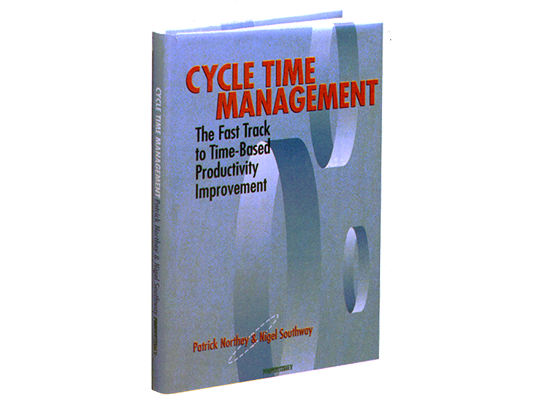
Without Understanding There Can Be No Real Commitment
Many companies are finding the need for more than the standard workshop or seminar. They want the lessons learned in workshops directly relevant to their business and capable of being quickly embedded into pragmatic applications. The CTM Learning Cycles program is designed explicitly to meet this growing need.
CTM provides lessons that are directly relevant to their business and capable of being quickly embedded into pragmatic applications
One thing you can be sure of. The CTM Program Directors “have been there and they have done it before”. These professionals are true practitioners. They spend the vast majority of their time, and their careers, in the field and on the job, learning and perfecting their craft. For them, it is an ongoing task, and no matter what they develop for the classroom and books, they know it only works when it is put into practice. Therefore, when they work with participants in the CTM Learning Cycles program, they know that they are a transfer agent of knowledge and experience, and that nothing happens until the participants are capable of doing it.
Learn what we can do for you!
Proven Experience
CTM was incorporated in 1986 and has delivered high quality services to numerous organizations in manufacturing, healthcare, and other industries. Read our clients' success stories.
Learn MoreIndustry Leader
CTM has developed a comprehensive process (The Lean Framework) that allows an organization to create an environment and a means for change. Change that permeates the entire company and becomes a new paradigm for growth.
Learn MoreOptimize Efficiency
Moving from reactive to proactive thinking in the work place. Having the employees understand the importance, scope and techniques involved allowed many clients to move forward at greatly accelerated rates.
Learn MoreMinimize Costs
CTM focuses on five key issues: identifying waste, cellular production, scheduling, production line processes, and production line support. Our process helps firms eliminate all inefficiencies and thrive.
Learn MoreServices
The right training is critical for successful lean performance. CTM will make sure your Lean Training works. See all the services that CTM's Lean Framework offers!
Learn MoreMaximize Productivity
Clients have found CTM’s Lean Assessment approach of key employee interviews, financial review, facility visit and a lean manufacturing evaluation to determining lean implementation requirements has been very effective.
Learn More
